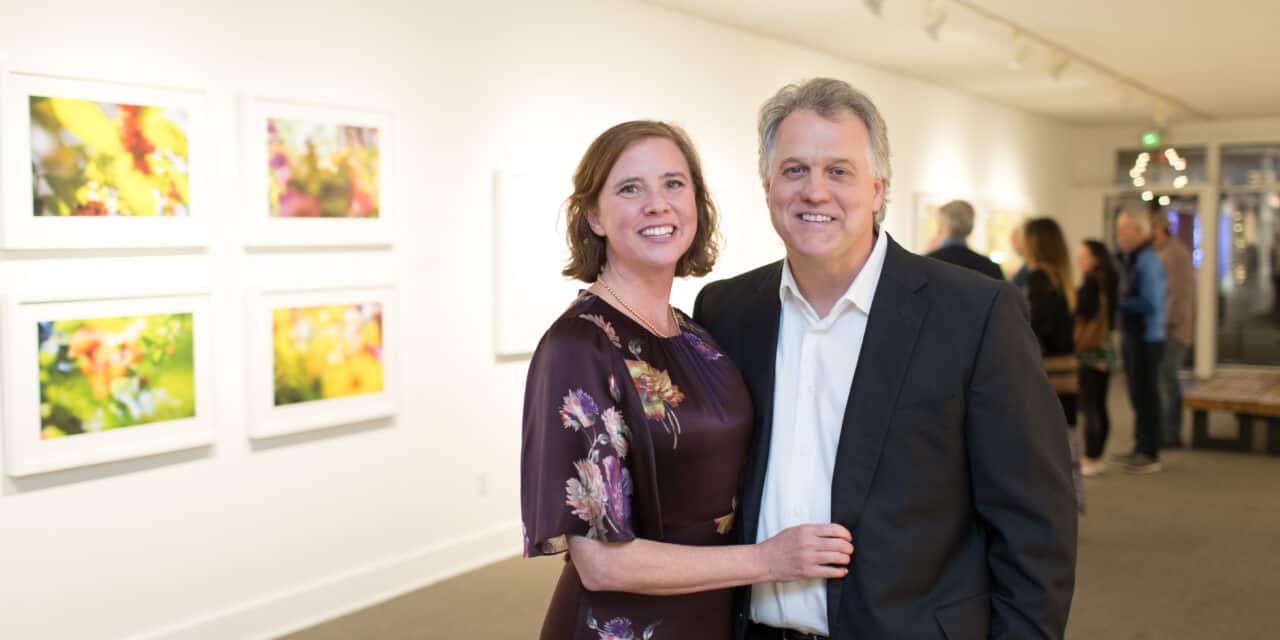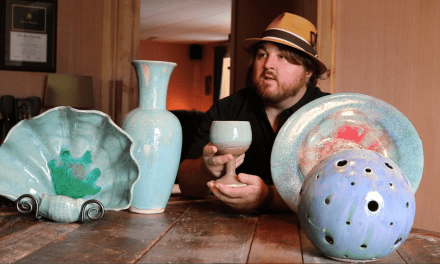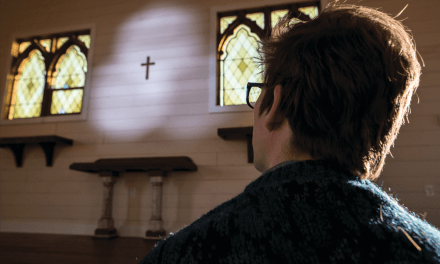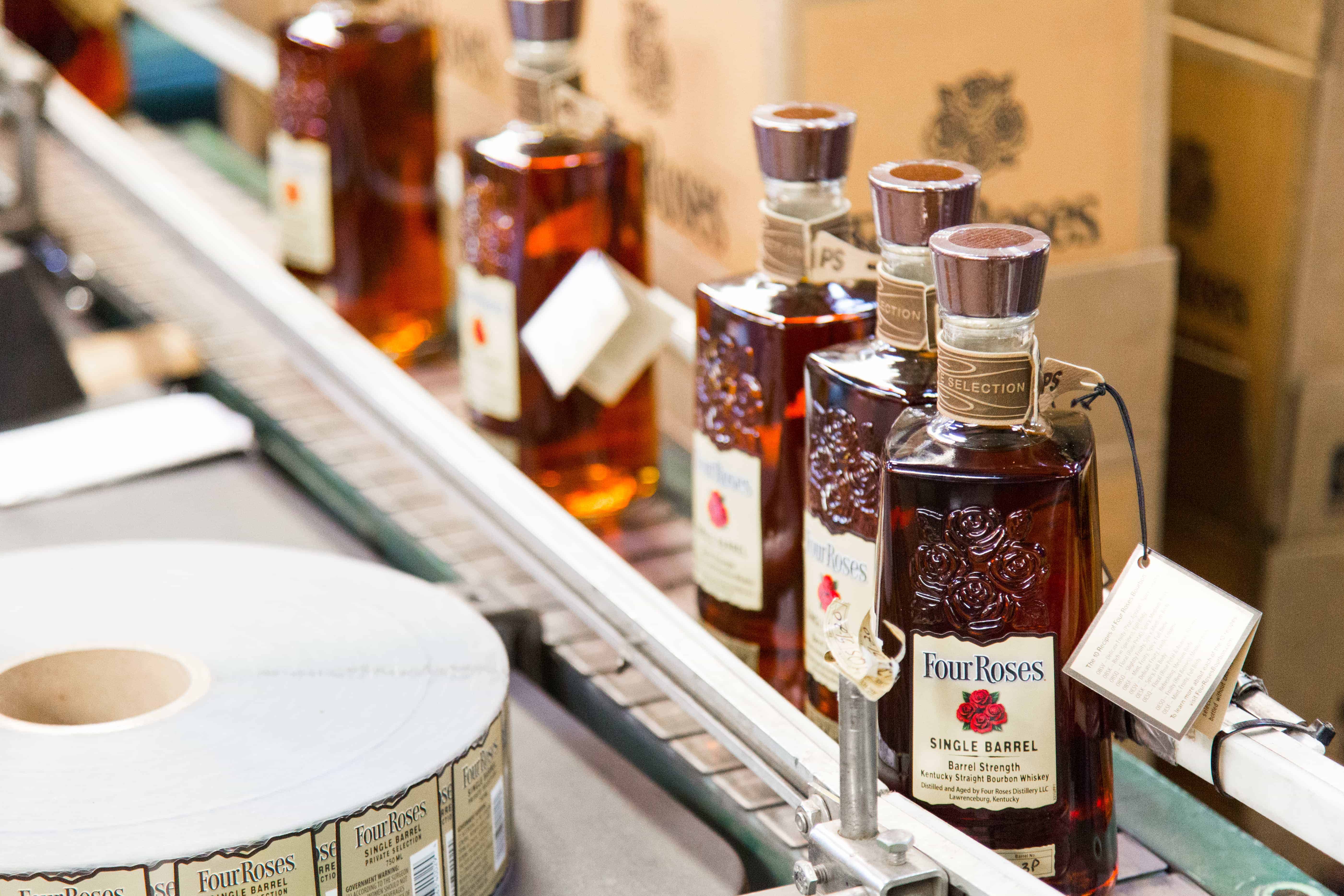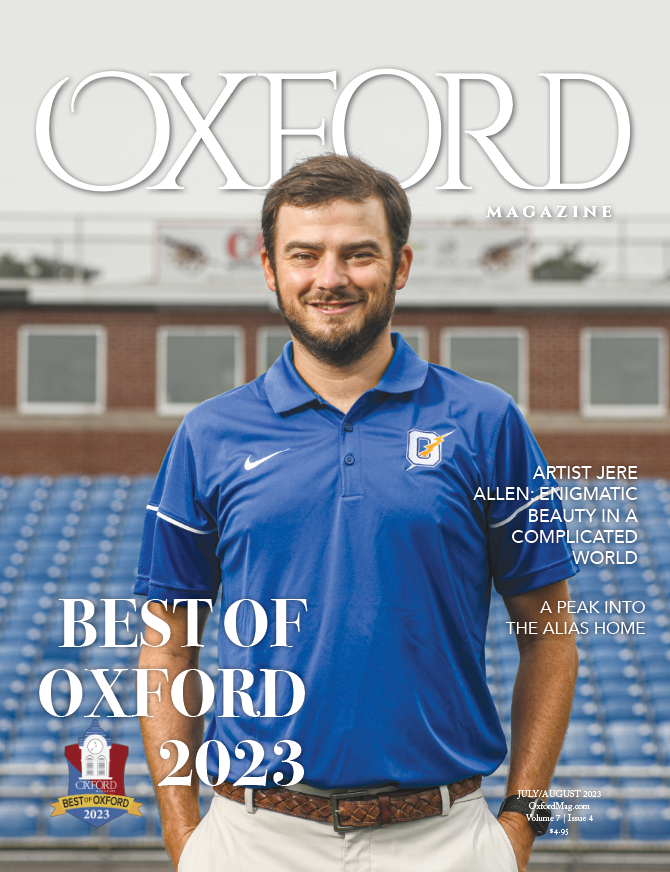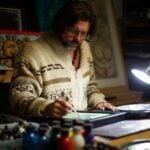by Scott M. Morris
Murmurations are mesmerizing. Anyone who has watched tens of thousands of little starlings—and sometimes even hundreds of thousands of them—seemingly flying as a single entity knows how breathtaking the sight is. The magical synchronicity the flocks achieve is frankly bewildering. To watch them swarming and swirling and expanding and contracting, you experience a dizzying gestalt moment—in one glance, you can glimpse the intricate maneuvers of individual birds, then suddenly you are swept along by the galvanizing motion of the entire flock as it moils and makes vivid, living, dynamic patterns across the sky.
All of which is an apt description of Carlyle and Thad Lee’s recent show at the Southside Gallery in Oxford, Mississippi. Appropriately titled Murmurations, both the process of making the art for the show, as well as the impact the art had on the viewer, were redolent with the wonder of murmurations. The signature of the couple’s work, like the flight of starlings, is that it is possible to observe a rapturous harmony between the details of each piece—and the elements within each piece—and the powerful force of the sum of these details submerged into the whole.
Because the paintings and photographs were inspired by being deeply immersed in nature in six different locations over the span of four seasons, the art itself provides a sense of a similar immersion for viewers. During that time period, Thad took photographs of trees, wildflowers and water surfaces, and Carlyle made drawings and paintings of them. Seeing Carlyle’s work clarified what Thad wanted to capture and create with his photographs, so he returned to his efforts invigorated with that clarity. In turn, Carlyle found that she was feeding off Thad’s work and gaining greater artistic lucidity from it.
When guests walked into the gallery to the sound of a piano music played by Damein Wash, the first piece encountered was a diptych by Carlyle called Posy’s Wildflowers, paintings based on Thad’s photographs of the wildflower pasture in Holly Springs where Carlyle rides her horse, Posy, on Wednesdays. Thad made four laps around the sea of zinnias and cosmos in the pasture, each time getting lower and deeper into the field, until he occupied the view of a crawling creature.
“The last photographs I took I was so close to the flowers the foreground became abstracted, creating sheer blobs of color that reminded me of the silhouetted shapes in Carlyle’s paintings,” Thad explains. “The beauty remained but the image’s familiarity was replaced with something mysterious and enchanting. Each photograph offered an element of surprise and something to discover. Carlyle used my photographs as a color profile for her paintings, from the colors of the grass, flowers and even the sky.”
Even a casual glance at Carlyle’s paintings and Thad’s photographs of wildflowers—and this applies to all of their other subjects—is to experience an initial disorientation. The paintings and the photographs are informed by one another and reflective of one another, intensely so. Each separately is densely but delicately textured, and when the eyes moves from one to the other, there is the sense that you being afforded a look at the true, gorgeous reality of wildflowers as they exist in nature. For all the detail and complexity, once the viewer is acclimated to what is, after all, Carlyle and Thad’s attempt to document the teeming abundance of nature, the disorientation vanishes to be replaced by the enriching splendor of seeing things afresh and anew.
The give-and-take, reflective aspect of their finished work perfectly mirrors the act of making it. Thad and Carlyle, who had been married for two years when they started the project, realized the fact that they were performing a kind of dance with one another. The artists were in the midst of a collaboration the character of which resembled a courtship.
“It was our first collaboration as husband and wife,” Carlyle explains. “My paintings and Thad’s photographs examine intricacies and abstract patterns in the atmospheres they portray. In exploring which of Thad’s photographs naturally related to my paintings, I asked him to show me the murmurations he had captured, which reveal the graceful synchronicity of so many birds moving as one. The amazing thing about these photographs is that they appear as both precise representations and abstract patterns, a quality I noticed popping up in our work. Thad loved the word murmurations and suggested that it conceptually structure our collaboration. We tried to develop work about places we experienced together with similar sensitivity and responsiveness. Thad’s movements influenced my movements, and my movements influenced Thad’s. It was wonderfully unguarded and challenging.”
What they produced was vast while at the same time redolent with the level of detail more commonly seen in minimalist efforts. The entire gallery was transformed by their work. The walls erupted with Carlyle’s paintings—acrylic on panels and watercolors—her graphite drawings and an installation of laser-cut plywood painted with acrylic, along with Thad’s archival pigment print photographs. Lushly-woven explorations bloomed everywhere.
To coin a phrase, Carlyle and Thad’s work displayed effervescent entanglement.
“Our work is something like fraternal twins,” Thad says. “Conceived together but not identical. We complement, inform, entice and inspire each other in reciprocal ways.”
The work was born of some of their favorite places. For example, Birdlands in Como, Mississippi, and the Woodland Gardens at the Dixon in Memphis, both of which the couple chose for their autumn work. In June, they travelled to lush Cashiers, North Carolina. “That was the first time I based a group of stencils on Thad’s photographs instead of my contour line drawings,” Carlyle reveals. “I trusted him uniquely and appreciated making something that was ours.”
During a lunch break in the middle of a six-hour canoe trip down the Ghost River section of the Wolf River—taking in five different ecosystems crossing from Tennessee into Mississippi—Thad stood in the shallows taking shot after shot and finally exclaiming: “Carlyle, look! I got it!”
What he’d painstakingly been working to depict was the way the foliage reflected in the ripples of water.
For Carlyle’s birthday, Thad took her to the Crystal Bridges Museum of Art in Bentonville, Arkansas. “We went in January of 2020, three months after our wedding.” Thad smiles, thinking of Carlyle. “The museum focuses on American art. Carlyle’s knowledge of the artists is deep, and I knew she’d love seeing their work. It was our first trip as a married couple. We stayed at the 21c Hotel in downtown Bentonville and every morning made the woodsy walk to the museum. We had timed the trip to overlap with the North Forest Lights, which is a dynamic and vast light exhibit in the woods surrounding the museum. A perfect place for me to play with my camera and capture Moon Paintings.”
Where ever they looked, the couple found another incarnation of murmurations.
“Finding ways to photograph the wildflowers opened a new understanding for Thad,” Carlyle explains. “New ways of seeing and using his camera. He described trusting his hands, embracing the surprise when he couldn’t see through the viewfinder, the physicality of immersing his camera in the foliage, and adjusting focus to balance veils of obscured color with something the viewer can grab.”
Then there were Thad’s “Moon Paintings,” a name Thad admits is misleading, as they are not paintings, and the subject is not the moon. “They are photographs made by playing with light, color, shutter and hand movement taken over the course of ten years,” he explains. “The series gets its name from a screenplay I wrote about a glass hotel on the moon that I hoped to make into a film. I wanted the art in the hotel to be original, bright, and abstract.”
The series is certainly original, bright and abstract, thrilling the viewer with a sense of discovery. The birth of the “Moon Paintings” series is fascinating. As it happens, the first photographs were taken during the summer of 2010, when Carlyle and Thad were dating. At the time, Thad was filming a low-budget, horror-comedy feature titled Night of the Loup Garou. Just about every scene was filmed at his cabin in Taylor, Mississippi. During filming, Carlyle let Thad borrow her Canon Rebel.
“It was the first time I had shot digital pictures,” Thad admits. “I am not sure which fascinated me more, being able to see the pictures instantly or seeing how the image distorted when I played with shutter and movement.”
Such was the start of the couple making art together. The triumphant show at Southside Gallery made it abundantly clear that it has been time well-spent.
“Being married to Carlyle has transformed my life,” Thad declares. “I love how much time we spend with each other. We wake up, have coffee and breakfast, then get busy with our projects, which includes exploring the places we love. I hope our work together creates a state of enchantment for the viewer. I hope people come upon rich and colorful landscapes and discover little surprises that lead them to wonder.”
Turns out, murmurations abound throughout Thad and Carlyle’s lives. Even during tough times.
One month before their show in December, as Carlyle and Thad hunkered down making last minute preparations for the opening, Thad’s father passed away due to pancreatic cancer. The couple took time off to join Thad’s family. Thad’s father, John Lee, was an outsized figure, a man who took up a lot of space and gave out a lot of love. The grief experienced by Thad and his family is painful testimony to his indelible presence.
“I am so grateful that Carlyle got to know my father for two years as a father-in-law,” Thad says, sighing. “He prayed for and blessed our marriage every day. I miss him terribly, but I have nothing but gratitude. I will take him, and the love my mother gave me, into the deepest parts of my heart and let them echo through my dreams and work and into my future with Carlyle.”

